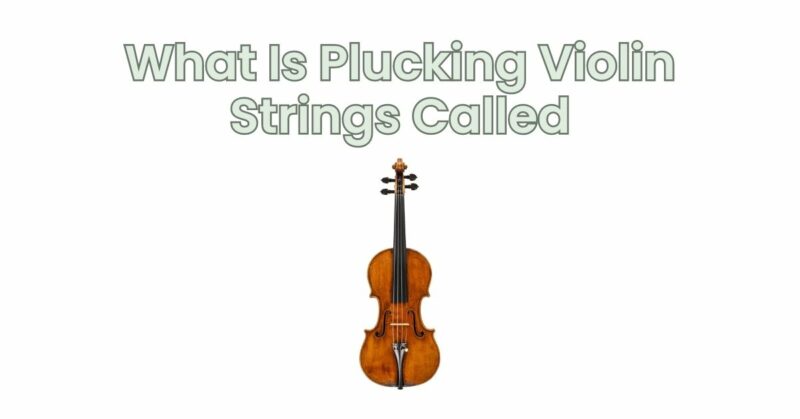The violin is renowned for its beautiful bowed sound, but it also possesses a technique that involves plucking the strings instead of using the bow. This technique, known as pizzicato, adds a unique and contrasting element to the violin’s expressive capabilities. In this article, we will explore the concept of pizzicato, its origins, execution, and its musical applications across various genres.
Pizzicato: Plucking the Violin Strings:
Pizzicato is an Italian term that translates to “pinched” or “plucked.” It refers to the technique of plucking the strings of a violin (or any other stringed instrument) with the fingers instead of bowing with a bow. By plucking the strings, violinists can create a distinctive sound that is percussive, immediate, and has a different tonal quality compared to bowing.
Execution of Pizzicato:
To execute pizzicato on the violin, follow these steps:
- Prepare your left hand:
- Release the bow from your right hand and ensure your left hand is properly positioned on the fingerboard.
- Place your fingers on the desired strings to create the notes or chords you wish to play.
- Plucking Technique:
- Use your right-hand fingers (usually the index finger and middle finger) to pluck the string(s) you intend to play.
- Position your plucking fingers above the desired string(s) without touching adjacent strings.
- Pluck the string(s) with a controlled and precise motion, using the pad of your finger(s) to generate sound.
- Experiment with different finger placements and angles to achieve the desired tone and volume.
- Sound Production:
- Apply consistent force while plucking the string(s) to produce an even sound across the strings.
- Avoid excessive force that may cause the string to snap or create an undesirable sound.
- Listen attentively to the resulting sound, making adjustments to your plucking technique as needed for clarity and resonance.
Musical Applications:
Pizzicato has various musical applications and can be found in a wide range of genres and styles. Here are a few examples:
- Classical Music:
- In classical compositions, pizzicato is often used as a contrast to the bowed sections, adding a rhythmic and percussive element to the music.
- Composers may specifically notate sections where pizzicato should be used to achieve a particular effect or highlight a musical theme.
- Jazz and Popular Music:
- Pizzicato is commonly employed in jazz and popular music to provide a distinct texture and rhythmic character.
- It can be used for walking bass lines, chordal accompaniment, or solo passages, adding a unique flavor to improvisations and ensemble playing.
- Contemporary and Experimental Music:
- In contemporary and experimental music, pizzicato is often explored for its expressive possibilities and non-traditional sounds.
- Extended techniques, such as plucking with unconventional objects or techniques like snap pizzicato, push the boundaries of traditional violin playing.
Conclusion:
Pizzicato is an essential technique for violinists, offering a contrasting sound to the bowing technique and expanding the range of musical expression. By plucking the strings with precision and control, violinists can create percussive, immediate, and unique sounds. Pizzicato finds its place in classical, jazz, popular, and experimental music, adding rhythmic drive, texture, and expressive possibilities. Experiment with pizzicato in your playing, explore its musical applications, and let it enhance your violin performances with its distinctive charm.


